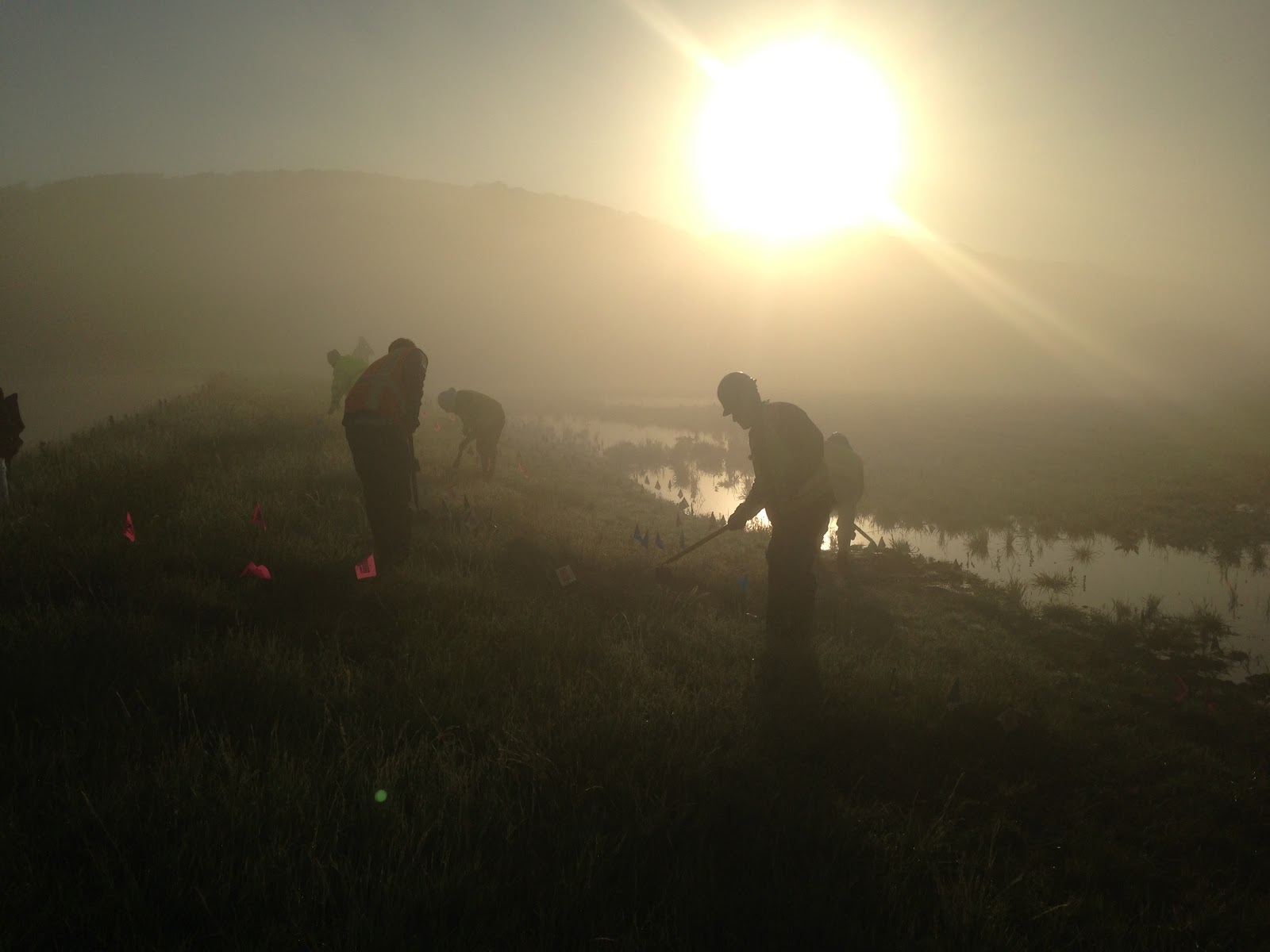Spring has brought new life to the San Andreas Wetlands! California red-legged frogs, a threatened species, as well as Pacific tree frogs have tadpoles hatching in the newly created wetlands. Birds such as Killdeer are laying eggs while garter snakes slither through the grass.
 |
Killdeer eggs in ground nest on project site.
Photo by Ilana Gauss
|
 |
| The project’s environmental inspector establishes a buffer zone around the nest.
Photo by Ilana Gauss
|
Project Details
The project created four wetlands in the northern Peninsula Watershed above San Andreas Reservoir (west of San Bruno). San Andreas Wetlands will benefit the endangered San Francisco garter snake and other native and local species.
Creation of the wetlands required removal of 15,000 cubic yards of soil from the site. Non-native plants were replaced with native vegetation, including red willow, arroyo willow, western goldenrod, and iris-leaved rush.
Some construction and landscaping vehicles are expected on Sneath Lane through 2013, although most of the heavy equipment work at this site is finished.
Target completion date: Fall 2013.
 |
Coast garter snake at San Andreas Wetlands.
Photo by Ilana Gauss
|
Bioregional Habitat Restoration
In conjunction with our Water System Improvement Program projects, the Hetch Hetchy Regional Water System is implementing the Bioregional Habitat Restoration Program (BHR) to provide high-quality habitat compensation for endangered and threatened species. This mitigation is designed to offset impacts from construction between the Central Valley and San Francisco.
The BHR will preserve, enhance, restore, or create approximately 1,800 acres of tidal marsh, vernal pools, sycamore and oak riparian woodland, oak woodland and savannah, and serpentine and annual grasslands.
Habitat restoration in numerous locations within our Peninsula and Alameda watersheds will take place from March 2012 through 2014.


No comments:
Post a Comment